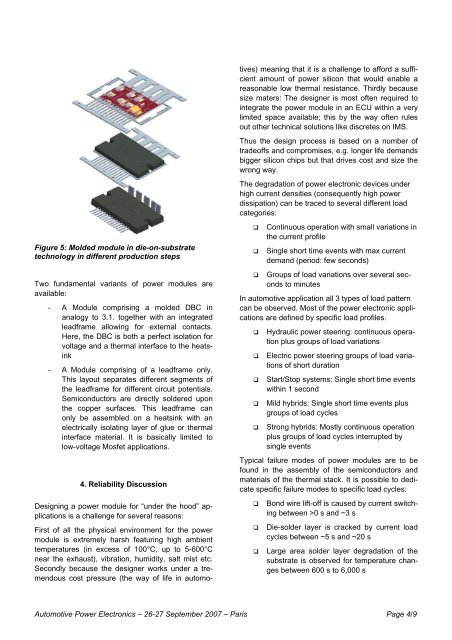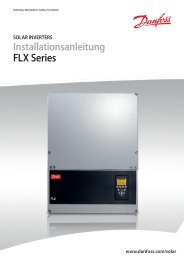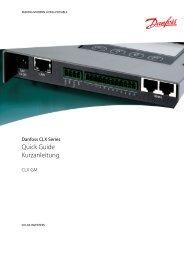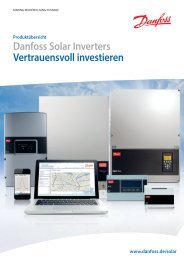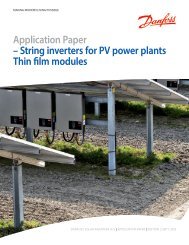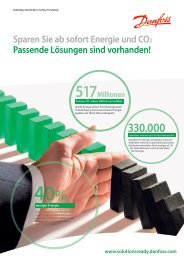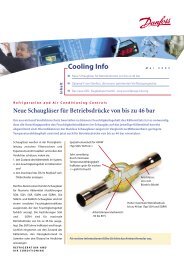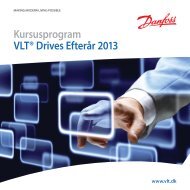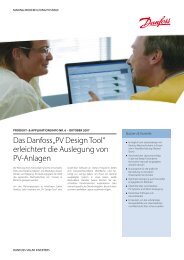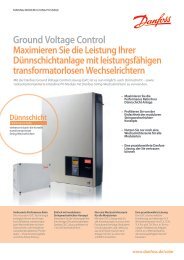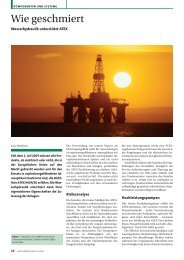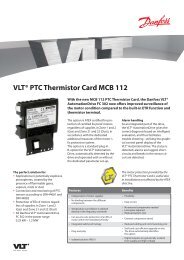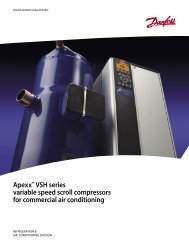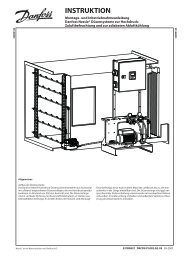Options for Electric Power Steering Modules a Reliability ... - Danfoss
Options for Electric Power Steering Modules a Reliability ... - Danfoss
Options for Electric Power Steering Modules a Reliability ... - Danfoss
You also want an ePaper? Increase the reach of your titles
YUMPU automatically turns print PDFs into web optimized ePapers that Google loves.
Figure 5: Molded module in die-on-substrate<br />
technology in different production steps<br />
Two fundamental variants of power modules are<br />
available:<br />
- A Module comprising a molded DBC in<br />
analogy to 3.1. together with an integrated<br />
leadframe allowing <strong>for</strong> external contacts.<br />
Here, the DBC is both a perfect isolation <strong>for</strong><br />
voltage and a thermal interface to the heatsink<br />
- A Module comprising of a leadframe only.<br />
This layout separates different segments of<br />
the leadframe <strong>for</strong> different circuit potentials.<br />
Semiconductors are directly soldered upon<br />
the copper surfaces. This leadframe can<br />
only be assembled on a heatsink with an<br />
electrically isolating layer of glue or thermal<br />
interface material. It is basically limited to<br />
low-voltage Mosfet applications.<br />
4. <strong>Reliability</strong> Discussion<br />
Designing a power module <strong>for</strong> “under the hood” applications<br />
is a challenge <strong>for</strong> several reasons:<br />
First of all the physical environment <strong>for</strong> the power<br />
module is extremely harsh featuring high ambient<br />
temperatures (in excess of 100°C, up to 5-600°C<br />
near the exhaust), vibration, humidity, salt mist etc.<br />
Secondly because the designer works under a tremendous<br />
cost pressure (the way of life in automo-<br />
tives) meaning that it is a challenge to af<strong>for</strong>d a sufficient<br />
amount of power silicon that would enable a<br />
reasonable low thermal resistance. Thirdly because<br />
size maters: The designer is most often required to<br />
integrate the power module in an ECU within a very<br />
limited space available; this by the way often rules<br />
out other technical solutions like discretes on IMS.<br />
Thus the design process is based on a number of<br />
tradeoffs and compromises, e.g. longer life demands<br />
bigger silicon chips but that drives cost and size the<br />
wrong way.<br />
The degradation of power electronic devices under<br />
high current densities (consequently high power<br />
dissipation) can be traced to several different load<br />
categories:<br />
� Continuous operation with small variations in<br />
the current profile<br />
� Single short time events with max current<br />
demand (period: few seconds)<br />
� Groups of load variations over several seconds<br />
to minutes<br />
In automotive application all 3 types of load pattern<br />
can be observed. Most of the power electronic applications<br />
are defined by specific load profiles.<br />
� Hydraulic power steering: continuous operation<br />
plus groups of load variations<br />
� <strong>Electric</strong> power steering groups of load variations<br />
of short duration<br />
� Start/Stop systems: Single short time events<br />
within 1 second<br />
� Mild hybrids: Single short time events plus<br />
groups of load cycles<br />
� Strong hybrids: Mostly continuous operation<br />
plus groups of load cycles interrupted by<br />
single events<br />
Typical failure modes of power modules are to be<br />
found in the assembly of the semiconductors and<br />
materials of the thermal stack. It is possible to dedicate<br />
specific failure modes to specific load cycles:<br />
� Bond wire lift-off is caused by current switching<br />
between >0 s and ~3 s<br />
� Die-solder layer is cracked by current load<br />
cycles between ~5 s and ~20 s<br />
� Large area solder layer degradation of the<br />
substrate is observed <strong>for</strong> temperature changes<br />
between 600 s to 6,000 s<br />
Automotive <strong>Power</strong> Electronics – 26-27 September 2007 – Paris Page 4/9


